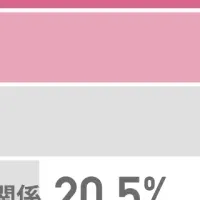
Women CEOs in S&P 500: Evidence Shows Equal or Greater Qualifications Than Men
Groundbreaking Report on Women CEOs
The Eos Foundation's Women’s Power Gap Initiative has released a compelling report that challenges the traditional perceptions regarding qualifications for CEO positions. Titled "Barriers and Breakthroughs: A Data-Driven Look at Women CEOs at America's Largest Corporations,” the report meticulously analyzes the career trajectories of leaders within S&P 500 firms.
The findings indicate that women CEOs are just as, if not more, qualified than their male counterparts. Notably, women were found to be 32% more likely than men to have held a president role prior to becoming a CEO. Andrea Silbert, President of the Eos Foundation, emphasized that this finding debunks the myth that companies lower standards to promote women, asserting that they often face higher hurdles instead.
Key Findings
The report highlights a steady increase in female leadership in major corporations, rising from only nine women in CEO roles in 2000 to 48 in 2025, which accounts for almost 10% of all S&P 500 CEOs. Furthermore, as of 2024, women represented 17% of new CEO appointments, totaling 11 out of 64 newly appointed CEOs.
Women in Leadership Pipelines
The data also sheds light on the upward mobility of women within corporate structures. Within the top 100 public companies, women occupy 24% of significant profit-and-loss (P&L) roles such as President or COO, which are crucial positions often paving the way to the CEO role. Despite this representation, the study reveals an alarming trend where for every ten qualified women in these roles, only three ascend to the CEO level. This gap has been deemed the "final drop," indicating a critical bottleneck influenced by unconscious biases in leadership selection processes.
Continuing Challenges
While the increase in women filling pivotal roles is celebrated, the report also identifies ongoing disparities across different executive functions. Currently, a disproportionate percentage of women are found in HR (76%) and Marketing/Communications (56%) roles—positions that are less likely to lead to the CEO suite. This underscores the need for organizations aiming for true meritocracy to ensure equitable access to P&L roles for women, thus fostering a more balanced pathway to leadership.
Actionable Recommendations
The report culminates with crucial recommendations for companies to enhance women's progression into leadership positions. It encourages a thorough examination of company cultures and systems, calls for the removal of obstacles that hinder merit-based advancements, and advocates for broader access to leadership roles that lead to the C-suite.
Moreover, it features detailed profiles of the current female CEOs, showcasing their qualifications, experiences, and the unique paths they took to their respective roles. These case studies serve as valuable resources for aspiring leaders and their advocates, providing insights and guidance.
About the Initiative
The Women’s Power Gap (WPG) Initiative, funded by the Eos Foundation, is committed to significantly increasing the number of women from diverse backgrounds in CEO roles across all sectors. Through the collection and analysis of publicly available data, the WPG initiative aims to identify barriers to gender advancement and has become a crucial voice advocating for systemic reforms.
In conclusion, this recent study not only reaffirms the capability and qualifications of women leaders but also highlights significant areas for improvement within corporate structures. Addressing these discrepancies not only promotes gender equality but also enhances organizational effectiveness in an increasingly competitive business landscape.
Topics People & Culture)










【About Using Articles】
You can freely use the title and article content by linking to the page where the article is posted.
※ Images cannot be used.
【About Links】
Links are free to use.